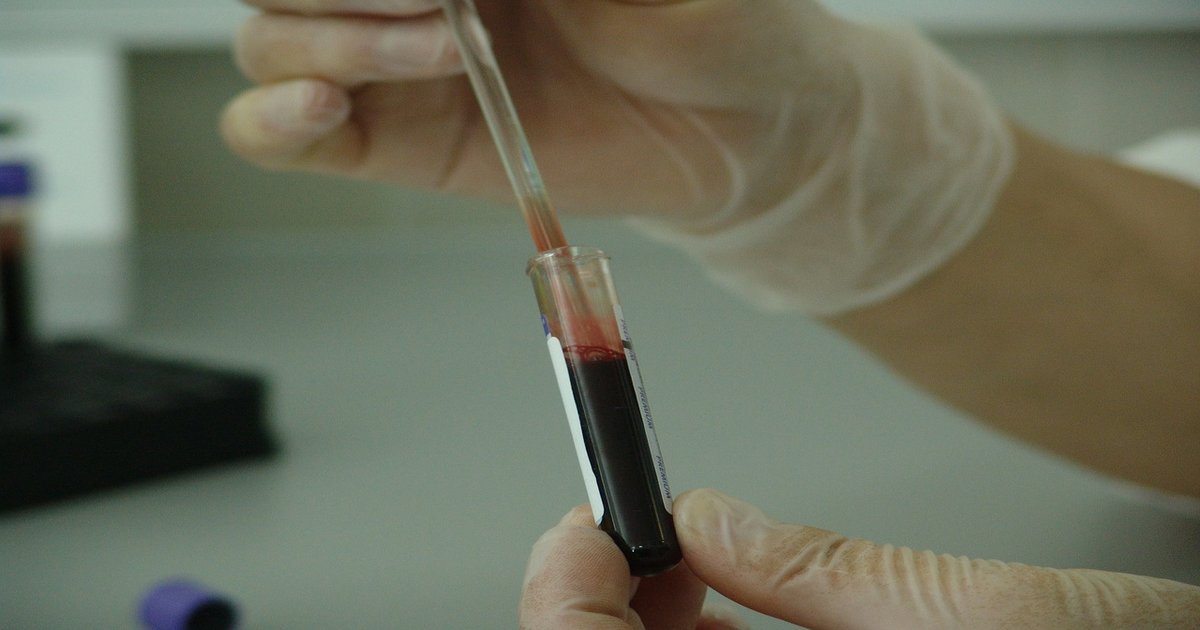Month: April 2012

Routine CT Screenings for Lung Cancer Would Detect Cancer Earlier and Save Lives
Men and women in the United States undergo regular screenings for certain cancers such as prostate cancer, breast cancer and colon cancer as part of routine medical checkups after a certain age. But patients typically don’t get screened for lung cancer, the most lethal cancer in the U.S.
Lung cancer kills more than 150,000 people each year in the United States. Lung cancer is associated with smoking as well as exposure to asbestos. More people die of lung cancer in the U.S. each year than die of breast cancer, colon cancer, prostate cancer and cervical cancer combined.
A new actuarial study published in the April issue of Health Affairs, a leading health policy journal, suggests that providing lung cancer screenings as an insurance benefit would save lives at a relatively low cost—about $12 a year per insured person. The refinement of low dose spiral CT scans, which can be done in a few seconds, has improved the detection of tumors in the lungs and reduced the need for invasive tests. Lung cancer and mesothelioma, a cancer of the lining of the lung, are both caused by inhaling asbestos fibers. Both often go undetected until they have reached an advanced stage.
Some studies have shown CT scans to detect early stage lung cancer in high-risk patients who were not showing any symptoms. A randomized study comparing two ways of detecting lung cancer in more than 53,000 older men and women found that patients who received low dose CT scans had a 20 percent lower risk of dying of lung cancer than those who received standard chest x-rays.
The actuarial study, performed by actuaries with the consulting firm Milliman in New York, analyzed the cost and benefits of lung cancer screenings for Americans ages 50 to 64, who were smokers or former smokers and had the equivalent of a pack-a-day habit for 30 years. That high-risk group includes about 18 million people in the U.S.
The study estimated the average yearly cost of lung cancer screenings to be $247 per person screened. The screenings would result in 130,000 additional lung cancer survivors in the first year. The analysis estimated that more cases of lung cancer would be detected at an earlier stage. It found that CT scans for lung cancer would cost insurers less than screenings for cervical cancer, colon cancer and breast cancer. Spread over the entire population of Americans with health insurance, the cost is $12 per year.
The authors recommend that commercial insurance companies should consider providing coverage for lung cancer screenings using low dose CT scans for people at high risk of developing lung cancer.
Workplace asbestos exposure is associated with a greater risk of developing lung cancer or mesothelioma. Those who smoke and are exposed to asbestos have an even greater risk of developing lung cancer or mesothelioma. These diseases have similar symptoms that include a persistent cough, chest pain, shortness of breath and weight loss.
NORD’s Fundraising Event for Mesothelioma and Other Rare Diseases
The National Organization for Rare Disorders (NORD) has announced its Partners in Progress 2012 Celebration will be held at Union Station in Washington, DC, on Tuesday, May 15, 2012. The event is NORD’s primary fundraising event for the year. Patients with mesothelioma, an asbestos-related cancer and one of the 7,000 rare, or “orphan,” diseases or conditions affecting millions of Americans, are eligible for support through NORD’s programs.
In the United States an orphan disease status is assigned to a disease or disorder if it affects fewer than 200,000 Americans at any given time. Mesothelioma is diagnosed in close to 3,000 Americans each year, with just as many dying from the disease.
NORD is a non-profit organization that receives no government funding and relies entirely on private donations. The organization offers vital services to the public through providing information about rare diseases, referrals to patient organizations, research grants and fellowships, advocacy for the rare-disease community, and Medication Assistance Programs that help needy patients obtain certain drugs they could not otherwise afford.
According to NORD, attendees at the Celebration include companies who work in the rare disease space, individuals from FDA and NIH who are interested in rare diseases, representatives from patient advocacy groups, and policy makers who are sensitive to rare disease issues.
Companies interested in co-sponsoring the event can find information at NORD’s website. Sponsorships are available from $1,000 to $50,000. Patients, government employees, patient organization representatives and other interested parties are invited to purchase individual tickets.

New British Research Suggests Link Between Asbestos and Heart Disease, Stroke
A new study of British workers finds that asbestos may cause other serious illnesses in addition to mesothelioma, an aggressive cancer that produces tumors in the lining of the lung.
The study, published in the latest issue of the Journal of Occupational and Environmental Medicine, reports that workers in Great Britain exposed to asbestos in the workplace are more likely to die from heart disease than people in the general population.
Asbestos is recognized as a cause of serious respiratory disease in humans, including asbestosis, a scarring of lung, lung cancer and mesothelioma, a cancer of lining of the lungs and abdomen. But it hasn’t been established whether asbestos exposure is a risk factor in cardiovascular disease.
But it’s well established that inhaling or swallowing asbestos causes inflammation. And inflammatory processes are involved in the development of cardiovascular disease, which includes diseases of the heart and blood vessels.
So researchers, led by Anne-Helen Harding of Britain’s Health and Safety Laboratory, analyzed the presence of cardiovascular disease and death rates among nearly 100,000 asbestos workers between 1971 and 2005. Many of the workers had jobs that involved asbestos removal.
The researchers reported a significantly higher number of deaths from ischemic heart disease and stroke among asbestos workers than the general population. Male asbestos workers were 63 percent more likely to die of a stroke and 39 percent more likely to die of heart disease.
The researchers also observed a correlation between the length of exposure to asbestos and the likelihood of developing ischemic heart disease, a reduced blood supply in the heart muscle. The researchers said the findings provide some evidence that workplace asbestos exposure contributes to heart disease in exposed workers.
Asbestos exposure is the leading cause of work-related deaths in Great Britain, accounting for approximately 4,000 deaths per year, according to the Health and Safety Executive, a British government agency that oversees workplace safety. In the United States, approximately, 2,500 to 3,000 people are diagnosed with mesothelioma in the United States each year and similar numbers of people die of mesothelioma each year. Symptoms of asbestos disease typically take 20 years to 40 years to appear, so workers exposed in 1970s may only recently have begun noticing symptoms such as shortness of breath, pain beneath the ribs and a persistent cough.
Healthy Lifestyle Choices Can Benefit Mesothelioma Patients
The National Cancer Institute reports 95% of the cancer diagnoses are dependent on choices we make every day, such as food selection, smoking decisions, sun exposure and exercise habits. Making poor choices can negatively impact our ability to age gracefully and to enjoy a full, productive life. Although Americans diagnosed with mesothelioma doubtful had control over the circumstances leading to their disease, a lifetime of healthy living can help the patient maintain a higher quality of life while battling the cancer.
The World Health Organization (WHO) wants to spread this message throughout the world as it invites all nations to join in the celebration of World Health Day on Monday, April 7. WHO has chosen “ageing and health” as the theme this year. With the slogan of “Good health adds life to years,” WHO has developed an ad campaign featuring elderly people enjoying time with their grandchildren, dancing, working in the fields and even bungee jumping.
“2012 is a year of reflection, work and celebration dedicated to promoting life that is not only longer but also more active and healthier,” said Dr. Mirta Roses Periago, Director of the Pan American Health Organization (PAHO) on the announcement of World Health Day.
By 2020, according to PAHO, the Americas will have 200 million older people, with more than half living in Latin America and the Caribbean. The increase in life expectancy and consequent growth in the older population has brought about a health transition characterized by a rise in non-communicable disease and disability and a wider demand for healthcare.
World Health Day is the kickoff for a year of advocacy activities and should not be seen as a one day event, said the organizers of the day. “Preventing diseases through immunization, good nutrition, and healthy lifestyles will result in an elderly population that is a rich resource for families, communities and nations,” Dr Samlee Plianbangchang, WHO’s regional director for South-East Asia.
Mesothelioma is a rare cancer causally linked to asbestos exposure. With a latency period of up to 50 years, most people exposed to the toxic material do not develop symptoms of mesothelioma until they are over 65. While the average survival time of mesothelioma patients typically varies from 4 – 18 months after diagnosis, many factors determine the life expectancy. Factors include type and stage of mesothelioma, treatment plan, whether the patient has ever smoked, the lifestyle, diet and fitness level of the patient, as well as age, sex and family traits.
According to a recent study by Belgian researchers, nearly half of older cancer patients have unrecognized medical problems that may also need to be addressed. Although not all of the conditions can be prevented, World Health Day is meant to bring awareness to the fact that a long, healthy life begins at childhood and depends on choices made throughout life.
By maintaining a healthy lifestyle through exercise and proper nutrition, those that do fall victim to mesothelioma may have an easier time of battling the disease and may enjoy a higher quality of life during treatments.

Panel Recommends Adding Mesothelioma To Conditions Covered by 9/11 Health Program
A medical advisory panel has recommended that mesothelioma be added to the list of cancers for which 9/11 firefighters and first responders are eligible to receive compensation for treatment under the James Zadroga Act. Mesothelioma is a cancer of the lining of the lung linked to inhaling asbestos. Asbestos was among the toxic substances in the dust cloud created by the collapse of the World Trade Centers.
After reviewing the emerging pattern of 9/11 health effects in recent scientific studies, the World Trade Center Scientific and Technical Advisory Committee recommended that the federal government cover cancers affecting the respiratory and digestive systems, as well as thyroid cancer, breast cancer, eye cancer, oral cavity cancer, urinary tract cancer, mesothelioma, melanoma, leukemia, lymphoma, soft tissue sarcomas and all childhood cancers.
The 15-member panel of doctors and health experts is responsible for tracking medical studies and recommending which illnesses should be covered by the Zadroga Act. Passed by Congress in 2010, the James Zadroga 9/11 Health and Compensation Act provides $4.3 billion to monitor, treat and compensate people suffering health problems associated with the 9/11 terrorist attacks. Cancer was not initially included among the illnesses covered by the federal law.
The advisory panel, which met last week, had until today to submit its recommendations to the World Trade Center health program administrator Dr. John Howard. Howard now has 60 days to review the recommendations and decide which cancers will be covered.
According to a 2011 study in British medical journal The Lancet, New York firefighters who worked at ground zero in 2001 were 19 percent more likely to develop cancer than firefighters who were not exposed to the hazardous conditions at the World Trade Center site. The researchers analyzed health records of nearly 10,000 New York firefighters and compared the rates of cancer among the firefighters who were exposed to toxic dust at the World Trade Center and firefighters who were not at ground zero. They found 263 cases of cancer among the exposed firefighters, reflecting a cancer rate 19 percent higher than in the group not exposed.
After the advisory panel’s recommendation, members of New York’s congressional delegation including U.S. Sen. Chuck Schumer and Sen. Kirsten Gillibrand, and Representatives Carolyn Maloney, Peter King and Jerold Nadler sent a letter to U.S. Health and Human Services Secretary Kathleen Sebelius requesting a meeting to discuss how the agency will proceed with a decision on whether to add the various forms of cancer to the 9/11 Health Program Coverage.
Approximately 2,500 to 3,000 Americans are diagnosed with mesothelioma each year. Most are exposed to asbestos in a workplace setting. Symptoms of asbestos-related disease typically take 20 years to 40 years to appear. Asbestos was used in thousands of building material products because it adds strength and resistance to heat, but its use has limited since the 1980s.

Free Mesothelioma Patient & Treatment Guide
We’d like to offer you our in-depth guide, “A Patient’s Guide to Mesothelioma,” absolutely free of charge.
It contains a wealth of information and resources to help you better understand the condition, choose (and afford) appropriate treatment, and exercise your legal right to compensation.
Download Now